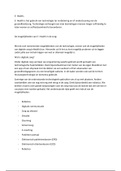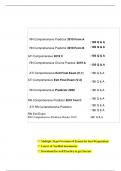Samenvatting
Extensive summary of prescribed literature of Gender and Diversity in Organizations (The dynamics of managing diversity. A critical approach)
- Instelling
- Radboud Universiteit Nijmegen (RU)
Extensive summary of prescribed literature of Gender and Diversity in Organizations (The dynamics of managing diversity. A critical approach); chapters 1-5 and 8-10 including some examples / pictures of tables.
[Meer zien]














